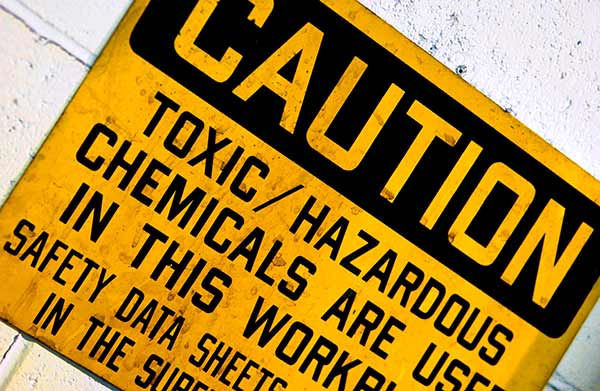Warnings
With the release of ANSI Z10-2012, "warnings" have been promoted to their own hierarchy level. Previously they were considered part of administrative controls.

Warnings do not prevent exposure to a hazard, but they do provide a visual or audible indicator to warn people of potential danger. They can be visual, audible, or both. They may also be tactile. Some examples of warnings are:
- Visual. Signs, labels, tags, and flashing/strobe lights.
- Audible. Alarms, bells, beepers, sirens, announcement system and horns.
- Tactile. Vibration devices or air fans.
For instance, a door could have both a sign warning of a hazard as well as an alarm if opened. Warnings can be effective deterrents, but are not as effective as elimination, substitution, or engineering controls.
OSHA Signs
OSHA's 1910.145, Specifications for accident prevention signs and tags details the following types of signs:
- Danger Signs - Signs that alert people to specific and immediate dangers (including radiation hazards).
- Warning Signs - Signs that warn people of potential hazards that can lead to death.
- Caution Signs - Signs used to alert people to potential hazards. This class can also be used to caution people against certain unsafe practices. This class is for hazards that can result in minor (non-life threatening) accident or injury.
- Safety Instruction Signs - These signs offer instructions for how someone should act or perform to avoid possible hazards.
One potential problem when using warnings is the misinterpretation of the warning itself. Does the symbol or text clearly explain what the hazard is to the public? For example, if a sign only contains a written warning, someone might read the sign but not know what the warning actually means. Or, if an alarm sounds, what does the alarm mean? These are challenges when using warnings and why they are not as effective as higher-level controls.
Knowledge Check Choose the best answer for the question.
5-6. Signs, labels, tags, and flashing/strobe lights are examples of _____ warning devices.
You forgot to answer the question!
